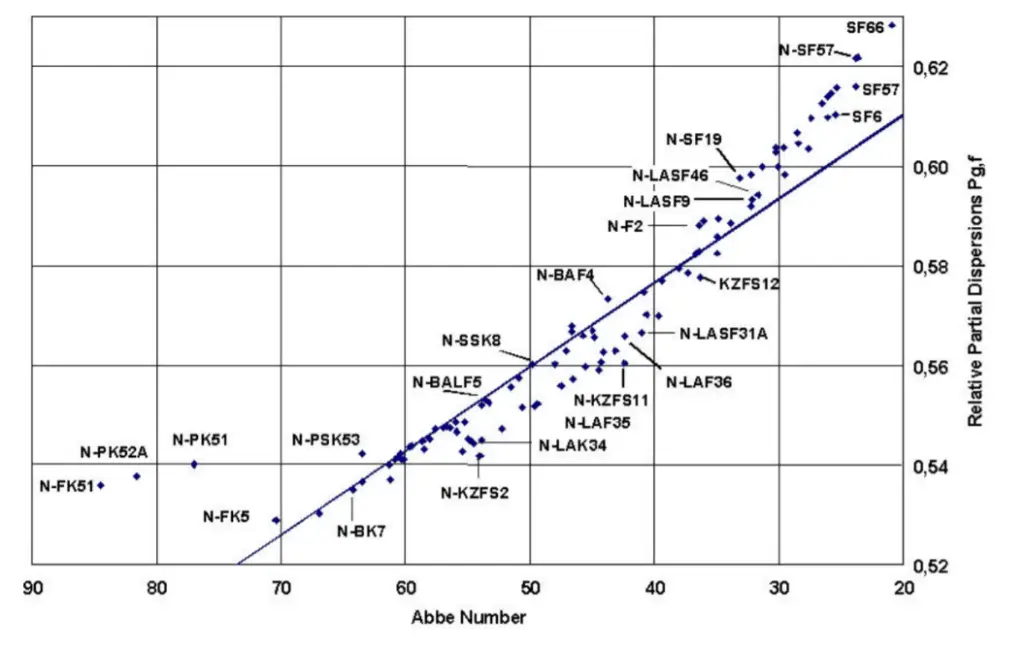This article explains how and when to use a model glass in OpticStudio.
Using the Model Glass Solve
The model glass is entered into OpticStudio as a solve type via the “Material” column in the Lens Data Editor (LDE). To activate the glass solve dialog, click on the small cell to the right of the appropriate Material cell.

The math behind the Model Glass
The general relative partial dispersion, Px,y, for the wavelengths x and y is described by the equation:1

For all glasses in OpticStudio, including the model glass, OpticStudio uses the reference wavelengths g (blue Mercury line at 0.4358343μm) and F (blue Hydrogen line at 0.4861327μm) to define the relative partial dispersion. Therefore, the relative partial dispersion becomes:

The majority of glasses (often referred to as the “normal glasses”), when plotted on a graph of Px,y vs. Vd, follow a linear relationship.

When to use (and not use) the Model Glass
Model glasses are an approximation, although usually a good approximation in the visible range. Outside this range, however, such as in the ultraviolet or infrared, the model glass is not accurate and should not be used.
It is true that even though the model glass is a good approximation in the visible spectrum, it should NOT be used as a replacement for other methods used to create glasses in OpticStudio if the required data is available to you. In other words, if adequate dispersion data is given to you for a material, use the alternate glass modeling methods in OpticStudio because they are more accurate. However, if the information available for the glass you wish to create is limited to the three parameters, the model glass in Zemax is relatively accurate and reliable in the visible spectrum.
References
- Schott AG (April 2005). TIE-29: Refractive Index and Dispersion. In Technical Information – Optics For Devices (Section 2.2). Retrieved from https://wp.optics.arizona.edu/optomech/wp-content/uploads/sites/53/2016/10/tie-29_refractive_index_v2_us.pdf
- Schott – Glass Made of Ideas. 2005 SCHOTT North America. [Online]. September 26, 2005. Available from World Wide Web: http://www.us.schott.com/english/index.html.
- Zemax Optical Design Program User’s Guide, Zemax Development Corporation
- Reference Source: https://www.zemax.com/

